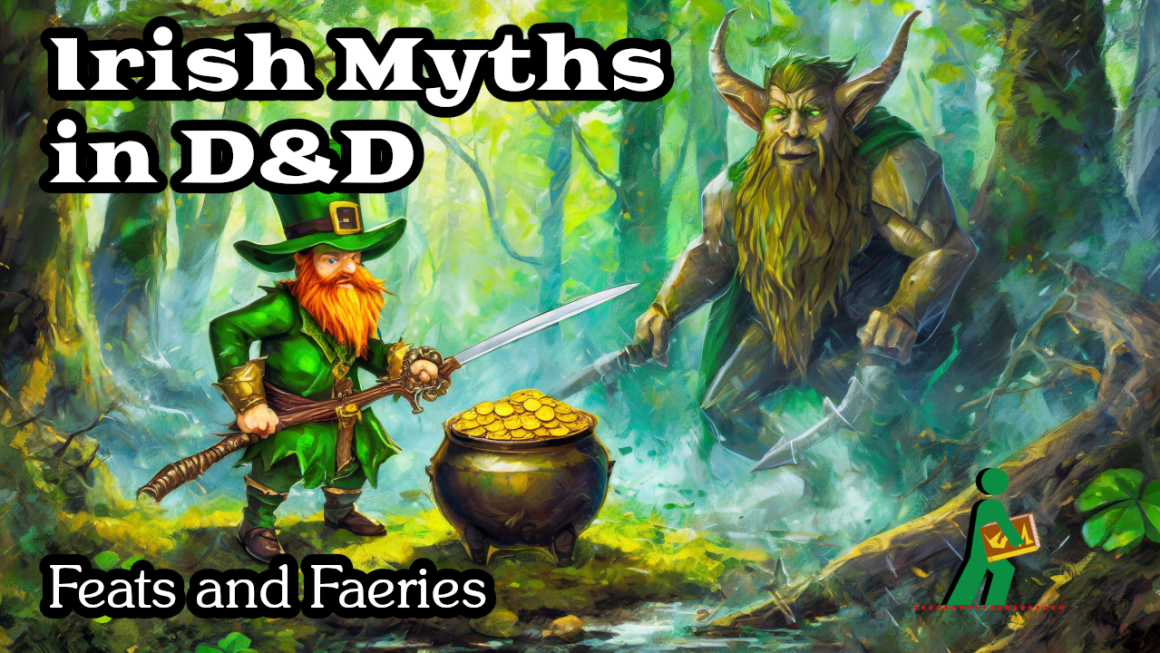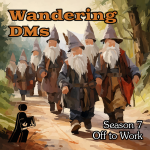
Irish Myths in D&D | Feats and Faeries | Wandering DMs S06 E10

This St. Patrick’s Day, Paul and Dan discuss the rich history of Irish myths, legends, and stories in the D&D game. From Druids and Bards to the Banshees and Firbolg, what are some of the best ways to spice up your game with inspirations from the Emerald Isle?
Irish mythology is the body of myths indigenous to the island of Ireland. It was originally passed down orally in the prehistoric era. In the early medieval era, some myths were transcribed by Christian monks, who heavily altered and Christianised the myths. Irish mythology is the best-preserved branch of Celtic mythology.
The main supernatural beings in Irish mythology are the Túatha Dé Danann (“the folk of the goddess Danu”), also known by the earlier name Túath Dé (“god folk” or “tribe of the gods”). Early medieval Irish writers also called them the fir dé (god-men) and cenéla dé (god-kindreds), possibly to avoid calling them simply ‘gods’. They are often depicted as kings, queens, bards, warriors, heroes, healers and craftsmen who have supernatural powers and are immortal. Prominent members include The Dagda (“the great god”); The Morrígan (“the great queen” or “phantom queen”); Lugh; Nuada; Aengus; Brigid; Manannán; Dian Cécht the healer; and Goibniu the smith. They are also said to control the fertility of the land; the tale De Gabáil in t-Sída says the first Gaels had to establish friendship with the Túath Dé before they could raise crops and herds.
They dwell in the Otherworld but interact with humans and the human world. Many are associated with specific places in the landscape, especially the sídhe: prominent ancient burial mounds such as Brú na Bóinne, which are entrances to Otherworld realms. The Túath Dé can hide themselves with a féth fíada (‘magic mist’). They are said to have travelled from the north of the world, but then were forced to live underground in the sídhe after the coming of the Irish.
This description uses material from the Wikipedia article “Irish mythology“, which is released under the Creative Commons Attribution-Share-Alike License 3.0.

